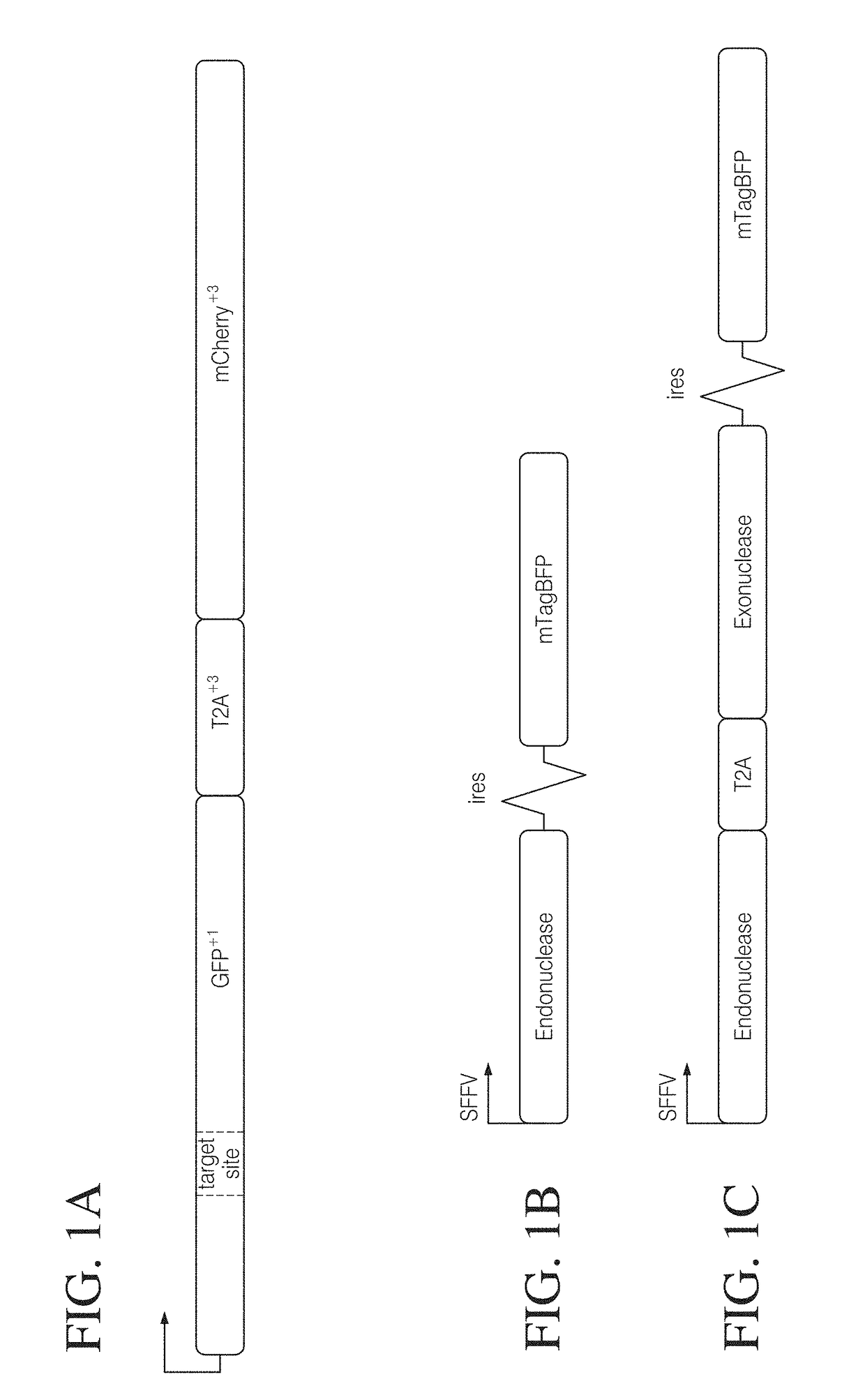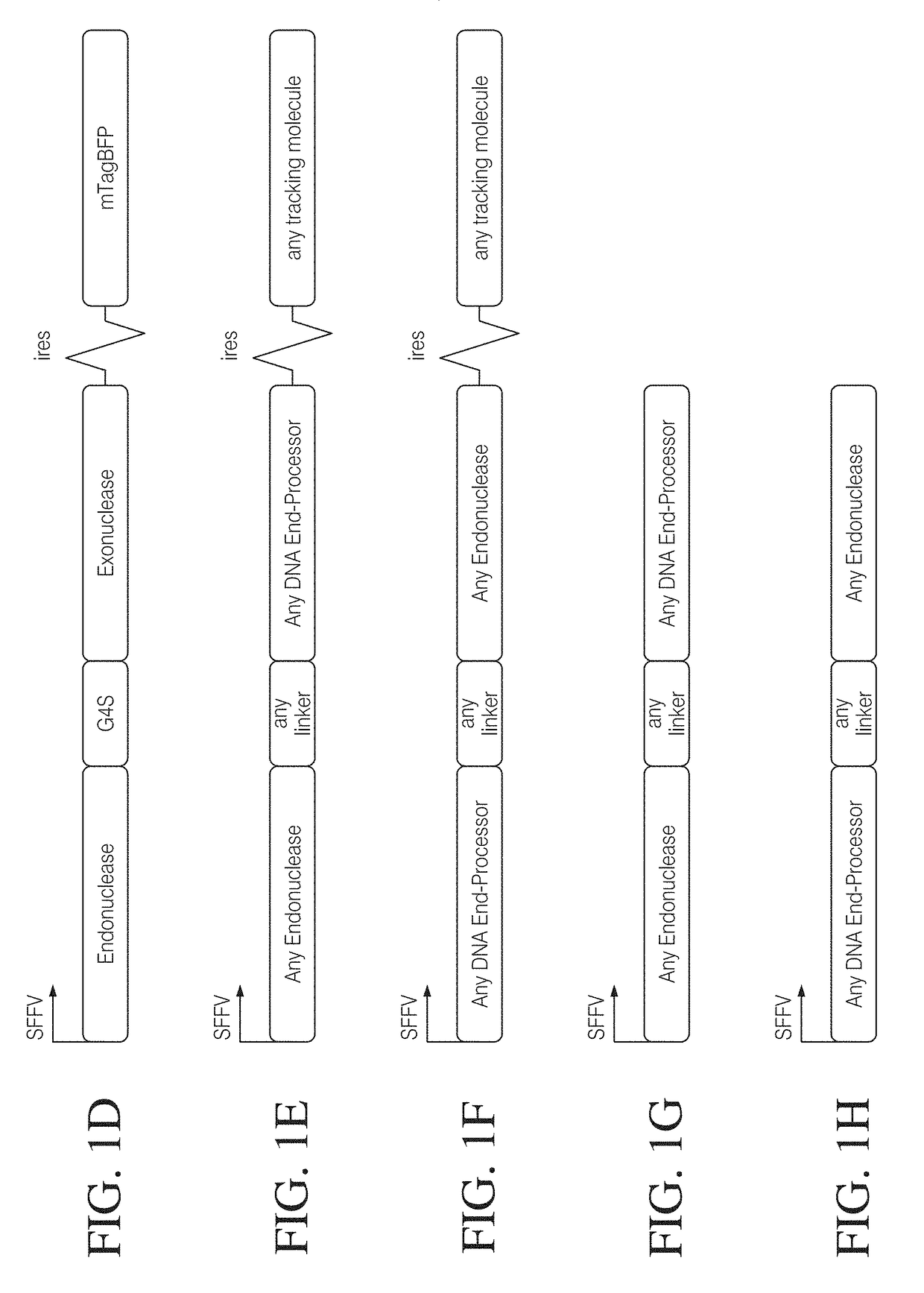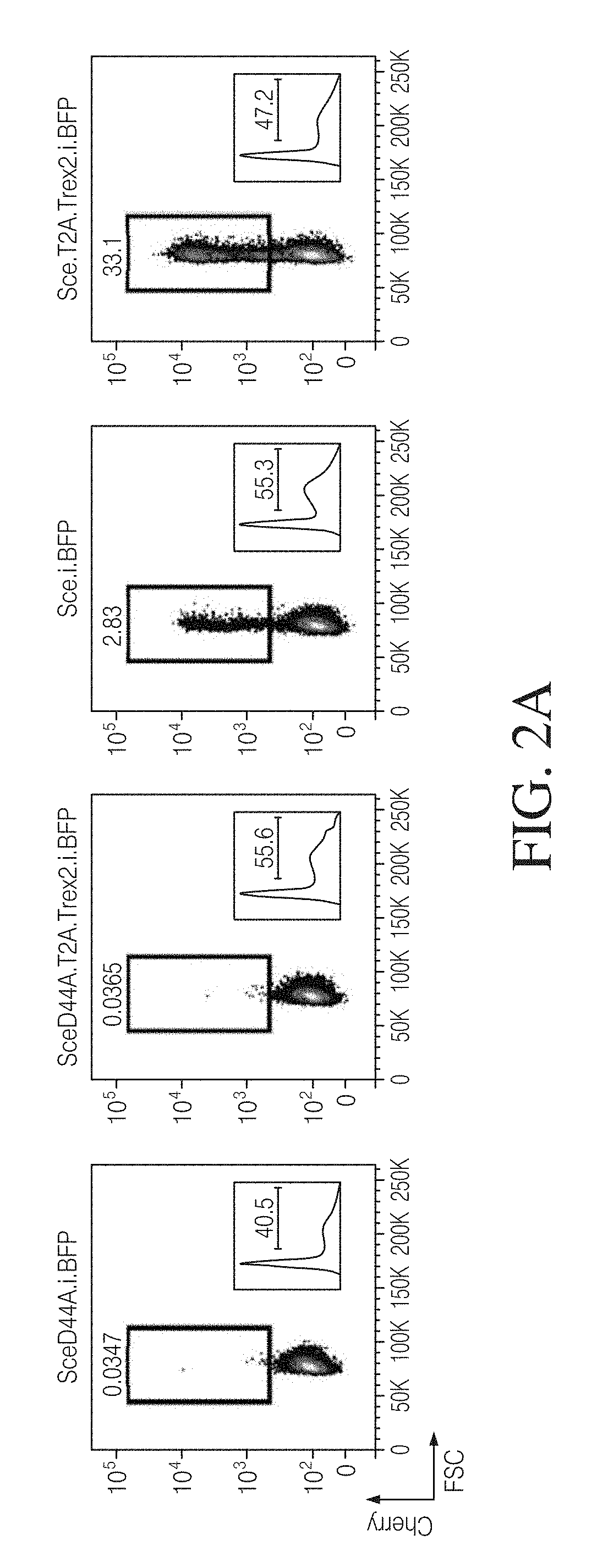Coupling endonucleases with end-processing enzymes drives high efficiency gene disruption
a technology of endonuclease and end-processing enzyme, which is applied in the field of molecular and cellular biology, can solve the problems of low probability of finding a naturally occurring cleavage site in a targeted gene, off-target cleavage events, and low probability of homing endonuclease cleavage sites, and achieve the effect of improving the mutation frequency associated
- Summary
- Abstract
- Description
- Claims
- Application Information
AI Technical Summary
Benefits of technology
Problems solved by technology
Method used
Image
Examples
example 1
Co-Expression of the Homing Endonuclease. I-SceI, and Trex2 Exonuclease Increases the Rate at which I-SceI Induces Mutations
[0152]To determine if coupling an exonuclease with a site-specific endonuclease could enhance targeted gene disruption efficiency, we assessed the effect of Trex2 on the mutagenic repair of DSBs generated by I-SceI. To ensure that Trex2 would be co-expressed with I-SceI, we developed expression vectors that drive coupled expression of both an endonuclease and an end-processing enzyme from a single promoter via a T2A “skip” peptide motif. We also included mTagBFP fluorescent protein co-expression by an internal ribosomal entry site (IRES) for tracking transfection efficiency.
[0153]To measure the rate of nuclease-induced targeted disruption, a mutNHEJ reporter construct (Traffic Light Reporter (TLR)) was constructed by placing the I-SceI target site, SEQ ID NO: 146 5′-AGTIACGCTAGGGATAACAGGGTAATATAG-3′, in front of the mCherry fluorescent protein ORF in the +3 rea...
example 2
Trex2 Exonuclease Increases the Mutation Rate of a Variety of Homing Endonucleases
[0162]The applicability of Trex2-enhanced disruption to multiple different nuclease scaffolds was evaluated. Targeted disruption reporter cassettes (mutNHEJ reporter cassettes) with target cleavage sites for I-Ltr, I-Gpi, I-Gze, I-MpeMI, I-PanMI, I-Cre, I-OnuI, I-HjeMI, and I-Anil (See Table 1) were generated by placing the endonuclease target site of interest placed in front of the mCherry fluorescent protein ORF in the +3 reading frame. HEK293T Reporter cell lines containing genomically-integrated I-Ltr, I-Gpi, I-Gze, I-MpeMI, I-PanMI, I-Cre, I-OnuI, I-HjeMI, and I-Anil TLR reporter cassettes were then generated. Each cell line was transfected with an expression construct for its respective enzyme with or without co-transfection of an expression construct encoding Trex2, and disruption rates were measured.
[0163]The effect of Trex2 co-expression with each of I-Ltr, I-Gpi, I-Gze, I-MpeMI, I-PanMI, I-Cr...
example 3
Co-Expression of Trex2 Exonuclease Affects the Mutation Rate Associated with FokI Zinc Finger Nuclease Mediated Breaks
[0167]A reporter cell line was generated that harbors a 5′ ACC ATC TTC ttcaag GAC GAC GGC 3′ (SEQ ID NO. 147) target site for a corresponding zinc finger nuclease containing a FokI nuclease domain. Expression vectors encoding the zinc finger nuclease were transduced into reporter cell lines harboring the TLR-FokI reporter cassette with and without Trex2. Co-expression of Trex2 with the zinc finger nuclease results in an increased mutation rate. See FIG. 11B.
PUM
| Property | Measurement | Unit |
|---|---|---|
| chemical | aaaaa | aaaaa |
| size | aaaaa | aaaaa |
| compositions | aaaaa | aaaaa |
Abstract
Description
Claims
Application Information
 Login to View More
Login to View More - R&D
- Intellectual Property
- Life Sciences
- Materials
- Tech Scout
- Unparalleled Data Quality
- Higher Quality Content
- 60% Fewer Hallucinations
Browse by: Latest US Patents, China's latest patents, Technical Efficacy Thesaurus, Application Domain, Technology Topic, Popular Technical Reports.
© 2025 PatSnap. All rights reserved.Legal|Privacy policy|Modern Slavery Act Transparency Statement|Sitemap|About US| Contact US: help@patsnap.com



